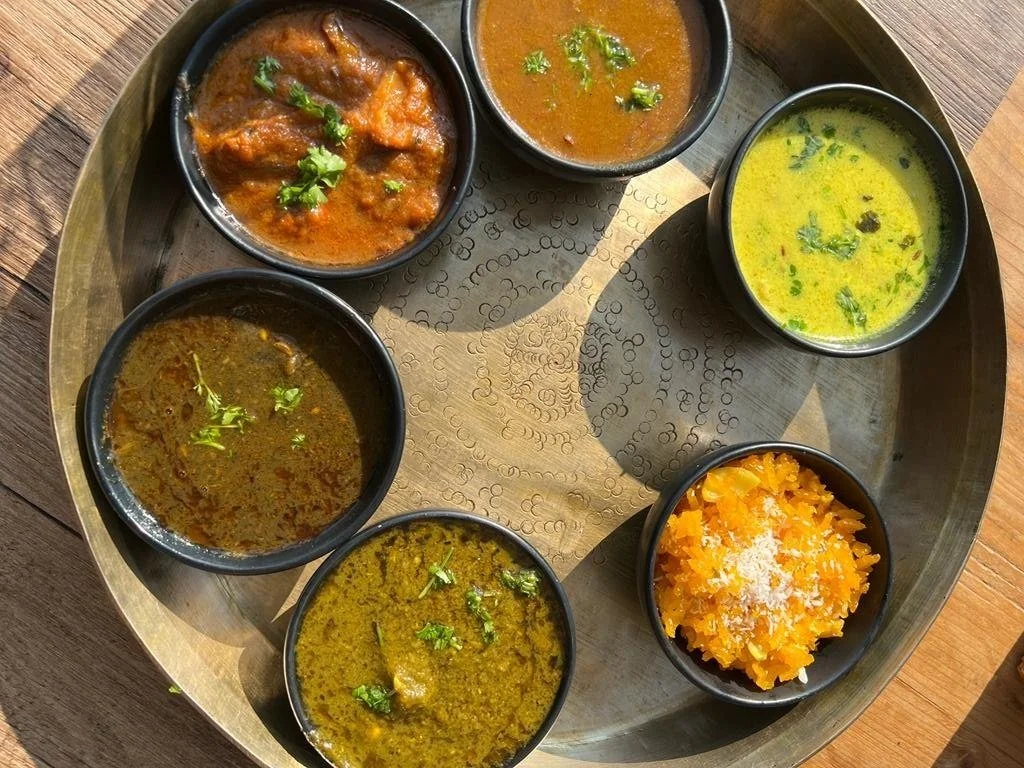Himachali Dham: A Vegetarian Feast inspired by Kashmiri Wazwan
Dhaam served at Wah Tea Estate, Palampur. Rice, Mukund Wadi Madra, Teliya Maah, Palda, Chuara Mathri (in an anti-clockwise direction)
Every time I go to my parents home in Himachal, there is at least one invitation of Dham, be it a wedding, festival, family celebration or a temple feast. Dham is the most inseparable part of our life in Himachal, reminisces Ritu Gupta who has been living Delhi for the past 20 years.
Dham is a traditional vegetarian feast that symbolises the bounty of foods and culture in Himachal. The story of Dham started with King Jaistambh of Chamba who was deeply impressed by the multi-course Kashmiri Wazwan and wanted his cooks to recreate something similar in the traditional Himachali way as an offering to the local Goddess. It was cooked only by Bhramin cooks from the Boti community with an absolute focus on hygiene and purity, including strict rules like no footwear and a special kitchen called Rasilau. It is a extremely laborious job and can take more than 12 hours for preparation. These recipes were passed down from generation to generation only through oral tradition.
The most unique thing about Dham is that it uses no vegetables, just lentils, dairy and grains. The menu and preparation varies from region to region, depending on the local ingredients. Himachal is known for variety of legumes. And that led to the creation of a very special lentil dish cooked in yogurt called ‘Madra’. In Chamba, Madra is made with Rajma (kidney beans) while in Kangra is uses Cholle (chickpeas). Another important preparation is Teliya Maah ki Daal, a black lentil prepared in mustard oil. Other preparations like Chhuara Mathri (dates & walnut curry), Mukund Wadi (sundried lentil badi cooked in gravy), Palda (buttermilk preparation that is never re-heated), Meetha Bhaat (fragrant sweet rice) and more.
The food is served in hand-stitched leaf plates ‘Pattal’ and a brass jug called ‘Masarba’ is used to serve water during the Dham feast.
Pattal photo by Anoop and Masarba by Ritu Gupta
The serving starts with rice followed by a variety of lentils and curries. Traditionally, dhaam feasts were organised for the entire village and hand stitched ‘Pattal’ were used as plates. Now it is replaced by steel plates. Narrow-neck deep brass vessels called ‘Charoti’ are used to slow cook the lentils on firewood.
The Famous Dham Meals of Himachal Pradesh, India.
Image Source: Himachali Dham: Food, Culture & Heritage (Monica Tanwar, Beenu Tanwar, Rattan Singh Tanwar, Vikas Kumar)





